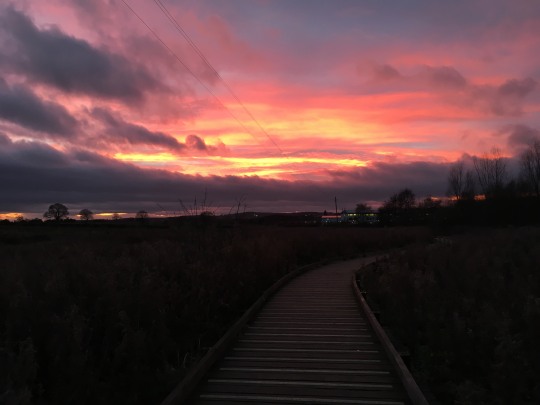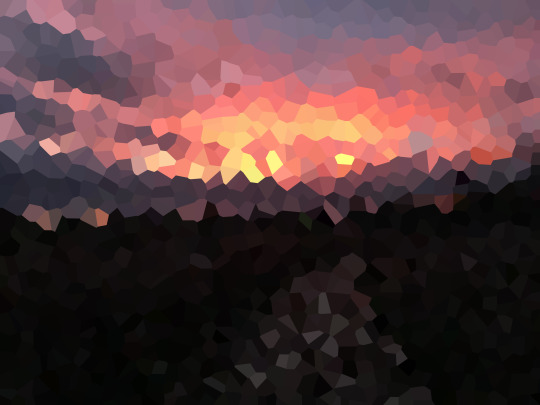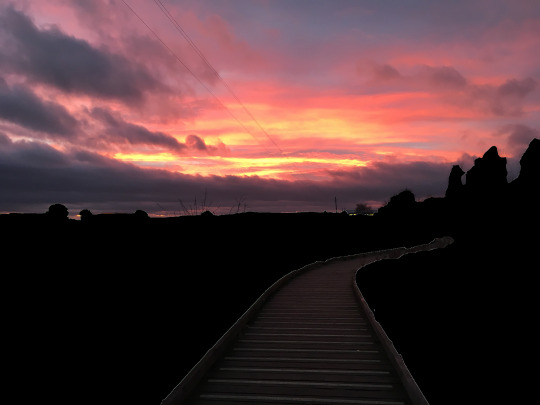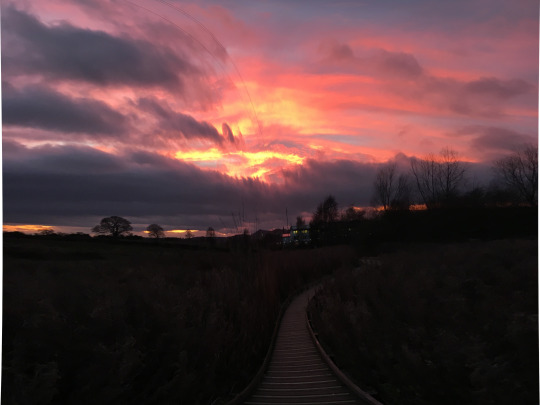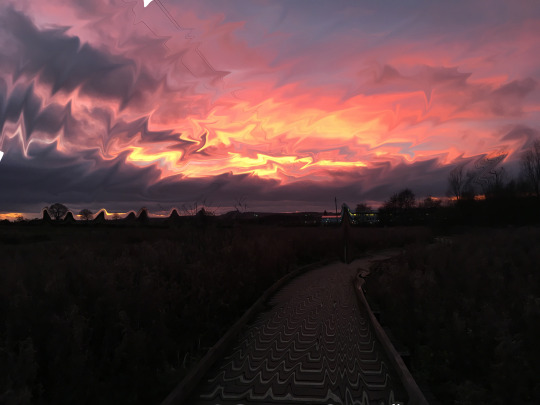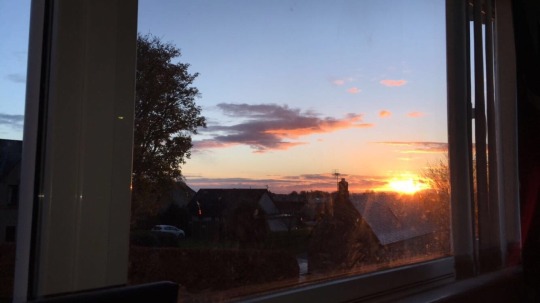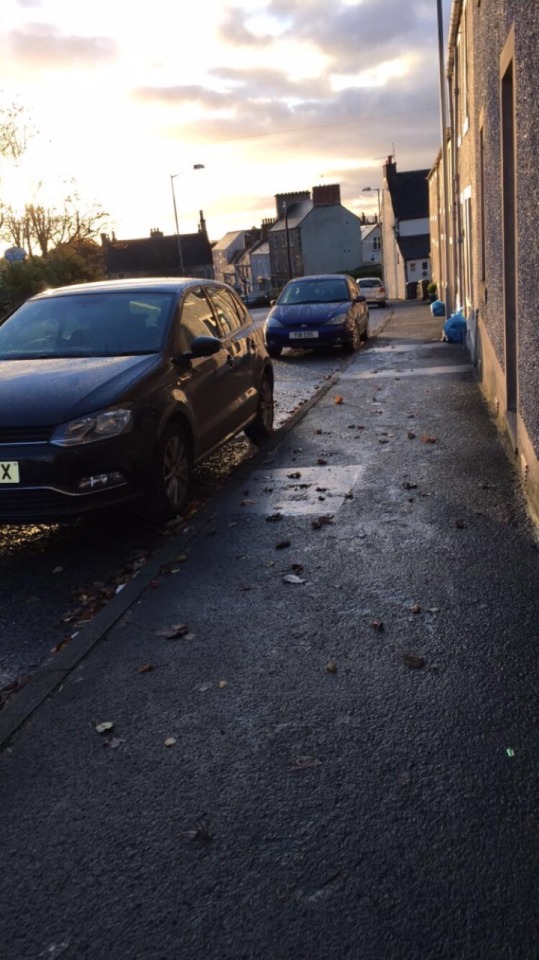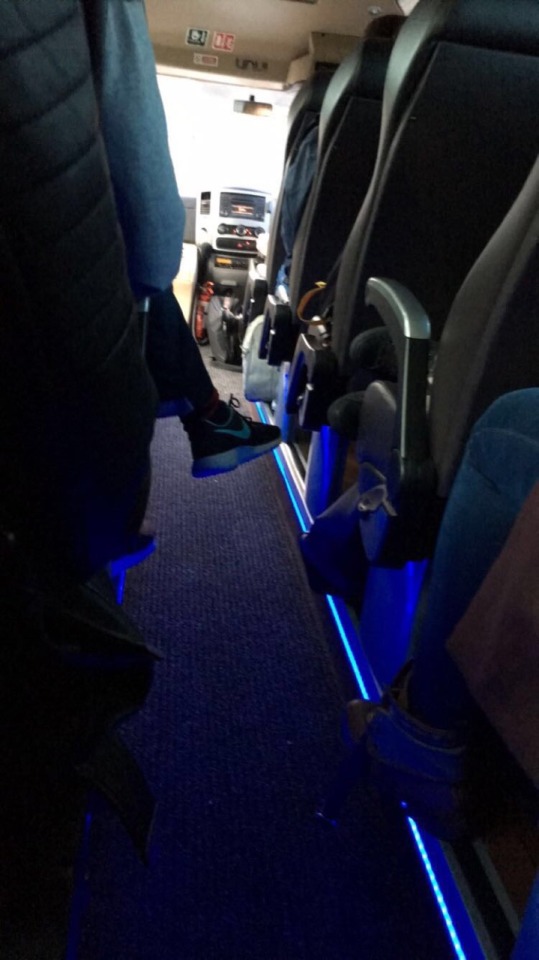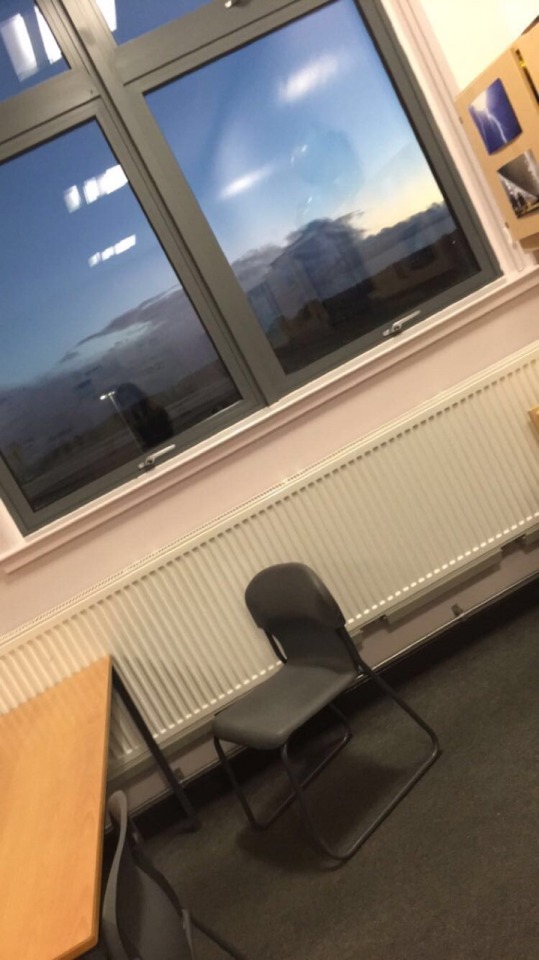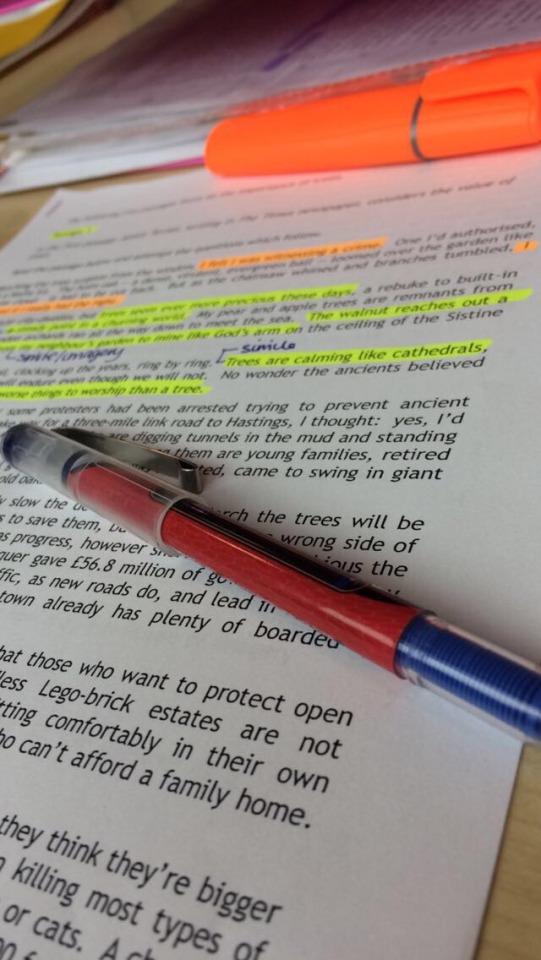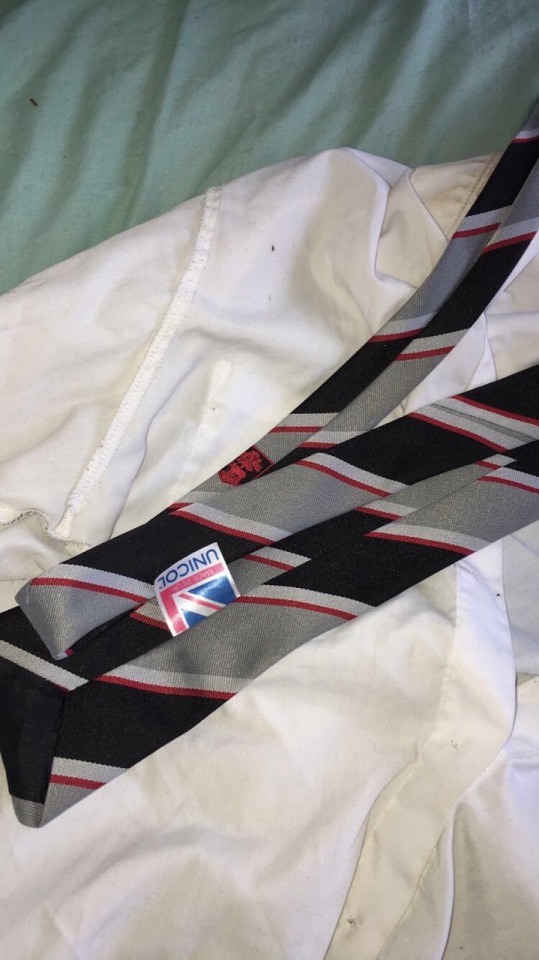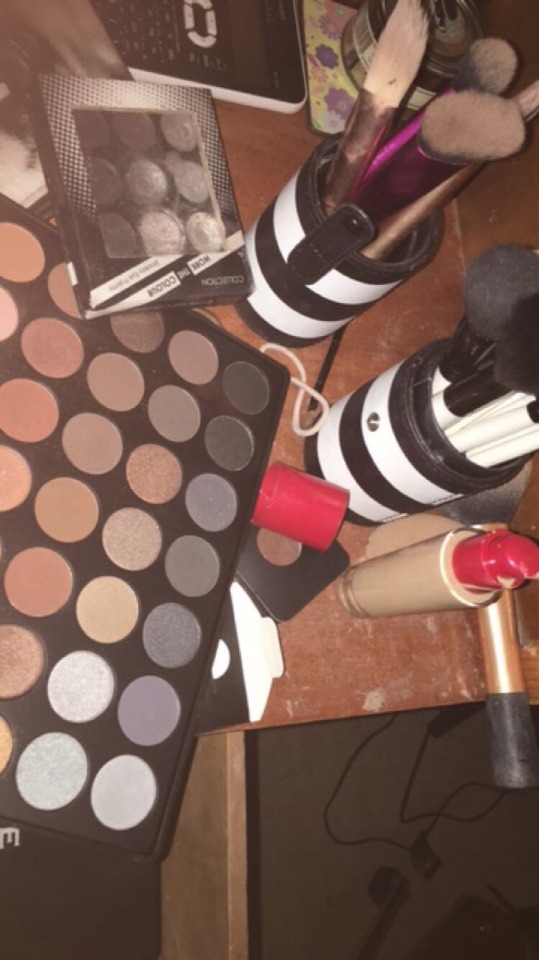online QMA portfolio, for photos and reports by Chloe Mifsud
Don't wanna be here? Send us removal request.
Photo





my theme for my 5 photos was colour, mainly with in the sky as you can see, but what i mainly wanted to capture was the shades of light. my 5 photos mainly focus around the shade of pink as i feel its a coulour that can vary so much especially within the sky (sunsets etc)
0 notes
Text
Digital Cameras
A digital camera, or also known as a digicam, is a camera that captures images and stores them digitally; they can also be stored in a computer, displayed on several different screens and printed. A lot of the cameras sold today are digital and you’ll find that digital cameras are used in a lot of different devices, for example mobile phones, or PDA’s and also vehicles. Digital cameras have an optical system; this is the same with movie cameras. They use lenses with a variable diaphragm to focus light onto an image pick up device. A diaphragm is a thin structure with an opening (also known as aperture) at its centre. It is to stop the passage of light except the light passing through the aperture; it is also called a ‘stop’. The diaphragm and shutter admit the correct amount of light to the imager just as with the film but the device is electronic rather than chemical.

However the difference between film cameras and digital cameras is that digital cameras can display images on a screen immediately after being taken and store and delete images from memory. A lot of digital cameras can also record moving videos with sound; some digital cameras can also stitch and crop pictures and can perform other elementary image editing

The creation of the digital camera started with a man called Eugene F. Lally, he thought about how to use a mosaic photo sensor to capture digital images. In 1961 he had the idea to take pictures of the planets and stars while travelling through space to give information about the astronauts’ position in space. Steven Sasson who worked as an engineer at Eastman Kodak invented and built the first electronic camera using a large coupled device image sensor in 1975. Previous ones used a camera tube. Early uses for the cameras were mainly for military and scientific; followed by medical and news applications In 1986 the Japanese company Nikon introduces the world’s first digital camera phone, the J-SH04 J-Phone in japan. By the mid 2000’s higher end cell phones had an integrated digital camera. By the beginning of the 2010’s, almost all smartphones had integrated digital camera Digital cameras have two mains types of digital sensors, they are CCD and CMOS. A CCD sensor has one amplifies for all the pixels while each pixel in a CMOS has its own amplifies, CMOS sensors also use less power. But all in all the overall final image quality is more dependent on the image processing capability of the camera rather than the sensor type
There are several types of digital cameras- Compacts- which are intended to be portable and usually good for casual ‘snapshots’
Rugged compacts- the same as compacts but designed more to withstand rugged conditions, hot and cold temperatures and high/low pressures
Action cameras- such as go pros, designed to record movement, and are easily attachable to helmets etc.
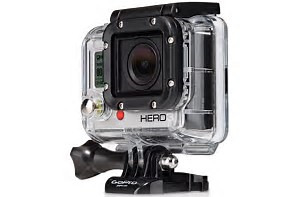
360 degree camera- takes 360 degree photos by using two lenses, back to back, which shoot at the same time
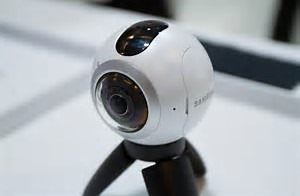
0 notes
Text
A view camera is a large formatted camera where the lenses create an inverted image on a found glass screen, directly at the plane of the film. The image seen is exactly the same as the image on the film, which replaces the viewing screen during exposure.
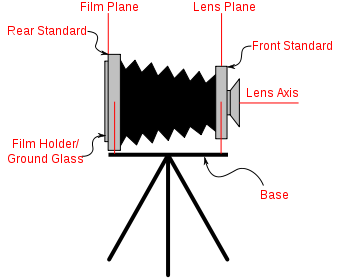
The view camera was created in the 1840’s-1850’s and is still used in our day and age although the ones that are used today have many refinements it compromises the flexible bellows that forms a light tight seal between the two adjustable standards, one of which holds a lenses and the other holds a viewfinder or a photographic film holder. The ‘bellows’ is the accordion like, pleated, part of the camera. The bellows encloses the space between the lens and the film and flexes to accommodate the movements of the standards. The front standard is a board at the front of the camera that holds the lens and usually a shutter. At the other end of the bellows, the rear standard is a frame that holds a ground glass plate, this is used for focusing and composing the image before exposure, it is then replaced by a holder containing the light sensitive film plate of image sensor for exposure

The front and rear standards can move in several different ways relative to each other which is unlike a lot of other cameras. This means the photographer has more control over focus, depth of field, and perspective, you will usually find this camera being used on a tripod or some other version of support
There are three types of view camera:

-The monorail camera- this is the most common.it has front and rear standards mounted to a single rail that is fixed to some type of support. This version has the best range of movements and flexibility because both front and rear standards are able to tilt, shift, rise, and fall and also swing in similar proportion. They are normally made of metal with leather or synthetic bellows. However these cameras are very difficult to pack for travel.
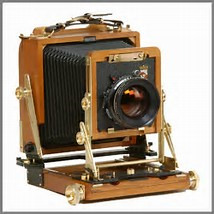
-the field camera-the field camera has a front and rear standard mounted on sliding rails fixed to a hinged flatbed that can also be attached to some type of support if the photographer wishes. Different to the monorail cameras, field cameras are usually made of wood, or sometimes lightweight strong composites such as carbon fiber, the bellows are usually retracted, the flat bed also folds up, reducing the camera to a relatively small, light. And portable box which is a lot easier to travel with
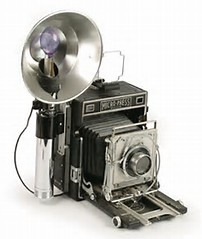
-press or technical cameras, these are true view camera, this is because almost all of them have a ground glass integral to the film holder mechanism that allows critical focus and full use of the sometimes limited movements. Some versions of the camera that will be more expensive will have a wide array of movements as well as focusing and composing aids like range finders and viewfinders. These cameras are most often made with metal, designed to fold up quickly for portability, they are normally used for press photographers before and during the Second World War. These cameras have a lot more adjustment capabilities like being able to tilt the rear standard and can either be held hand or attached to a tripod or any other support

I think these cameras are very old fashioned in my opinion. I believe that that were well developed for the day and age they were created in and were probably very useful at the time, but in the 21st century where we have cameras in our phones and professional digital camera, I believe we are in a generation where these cameras are just impractical. I understand how they were useful in the sense that they can tilt and slant and move up and down which really gives the photographer a lot of opportunity in their photographs, but now we have cameras that do that at the press of a button, cameras that are a lot smaller and probably get sharper images. although if a photographer wanted to capture a more old fashioned image, I think this camera would be good for them to use.
0 notes
Text
Image Scanner
An image scanner is a device that scans images and printed text, whether that be handwriting or an object, and converts it into a digital image, it is commonly used in offices, the one found in offices however is the ‘flatbed scanner’ which is a scanner where the document is placed on a glass slide for scanning. However there are also handheld scanners, where the device is moved by hand. These scanners have evolved over the years to what we now use, 3D scanners. 3D scanners are normally used for industrial design, test and measurement, reverse engineering, gaming, orthotics and other applications. The mechanically driven scanners are ones that move the document themselves and are mainly used for large format documents where a usual flatbed design would be very impractical.

handheld scanner
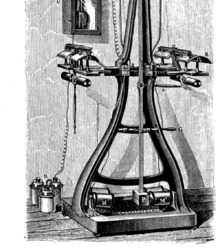
pantelegraph

Modern day scanners normally use a charge-coupled device (CCD) or a contact image sensor (CIS) as the image sensor. However ‘drum scanners’ which were developed earlier, are till used fro the highest possible image quality, they use a photomultiplier tube (PMT) as the image sensor. A ‘rotary scanner’ which is used for high speed document scanning, is a type of drum scanner that uses a CCD array instead of a photomultiplier. You can also get non-contact ‘planetary scanners’, these scanners are used to photograph delicate books and documents. All these scanners produce two dimensional images of objects apart from 3D scanners which produce information on the three dimensional structure of solid objects.

Modern scanners are seen as the successors of early telephotography and fax input devices. The pantelegraph was the early form of a scanner; it transmitted over normal telegraph lines and was created by Giovanni Caselli, it was used in the 1860’s and was the first device to enter practical service. It used electromagnets to drive and synchronize movement of pendulums at the source and the distant location, to scan and reproduce images, it could transmit handwriting, signatures, or drawings, within an area of up to 150 x 100mm
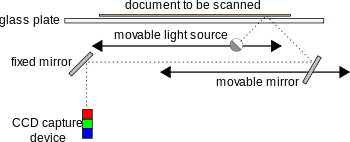
cpt scanner
i think the creation of the scanner was a very clever idea and i think the way it works is intriguing, i dont really feel the sudden want to try it and see how it works but i do believe it is very useful within offices etc, and our lives would probably be very difficult without it
0 notes
Text
Galka was born and educated in Germany; she moved to London in the early 1990’s, this is when she began her career in photography. The majority of her work is of urban nature, Galkas images have been published in several newspapers and magazines a selection of her black and white work is currently installed in Newcastle airport.

Her work is mostly baes around the theme of London, judging by her photos you can see her main influence is London as she says the city fascinates her. She believes in capturing the ‘everyday’ moments that happen around us all the time, photos that define human life. Ronya believes there’s something very honest and straightforward about street photography and that it is a unique way of defining culture and making sense of the world around her. She has been very passionate about it ever since she moved from Germany
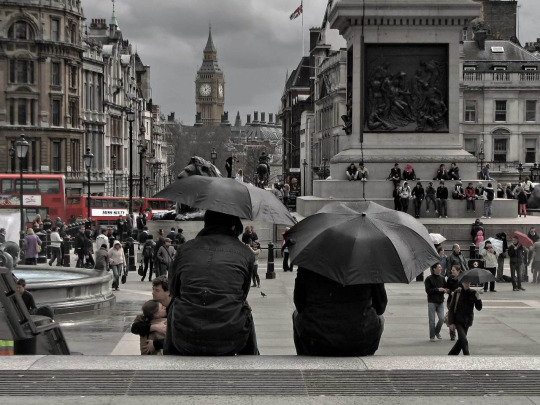
Ronya Galka is a renowned street photographer, she was named as one of the ‘top 10 British street photographers in 2015’ by the interactive design institute and was shortlisted for ‘most influential street photographers’ in 2016.

Her photography has been exhibited at Liberty’s of London and the Pall Mall gallery in London; it can also be found in private collections around the world and has resulted in numerous publications and exhibitions over the past decade. Ronya has also contributed to the book ‘the new street photographers manifesto’.

Galka shoots lifestyle, portraits, as well as commercial assignments, mainly on location. She says she loves to depict the urban environment and its many inhabitants in various shapes and forms, she aims for simplicity and for each of her photos to tell their own story
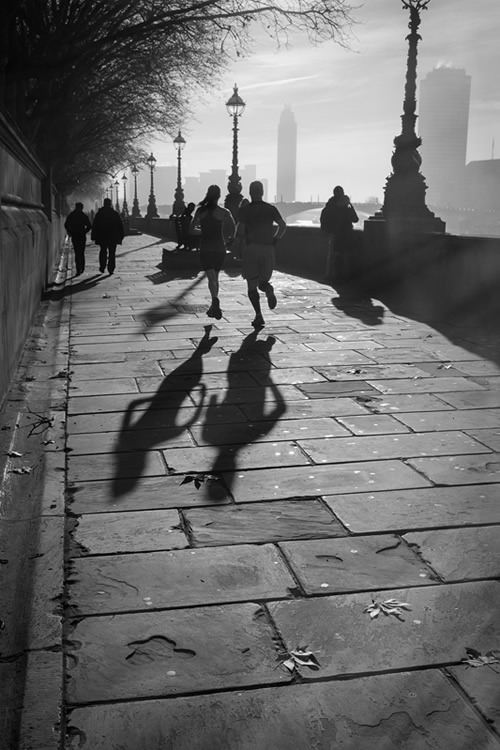
Prior to her photography business she had a successful career as a marketing and brand manager fro many years and having sat at both sides fo the table she is able to translate her clients’ briefs into winning images
Her clients include companies such as- Penguin Random House, ClearScore, Britsih Airways ,and Peroni but also several more.
Personally I am not a big fan of Galkas work, I prefer photography with more colour, however I do appreciate her photography skills, it is clear she has a good eye and is able to take amazing photos but personally I feel her photos are quite dull and depressing and quite cliché street art, but everyone has their own opinion and clearly a lot of people love her photos
1 note
·
View note
Text
Ross Hoddinott
Hoddinott grew up on a six acre farm located in north Cornwall; he spent most of his childhood surrounded by nature. He first developed his passion for photography at the age of ten. At the age of twelve he won the junior flora and fauna category in BBC country files annual photographic competition. When he turned 13 he started submitting photos to image magazines, by 17 years old he was named young wildlife photographer of the year.
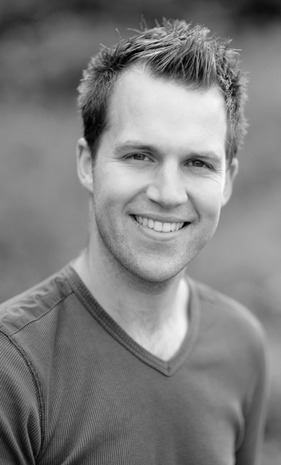
One of Hoddinotts main influences were his parents, this is mainly because they got him to start photography at the age of ten although another influence he had was the fact that he was constantly surrounded by nature, this fact is the reason the main focus of his photos is nature. As Hoddinott works close to home, it allows him to have an intimate knowledge of the area while also minimising his carbon footprint.

Hoddinott uses nine different lenses which help him have various types of photos, for example he uses a micro lense to help him photograph close ups and a wide lense to help him take shots from a larger distance

Now at age 38, hoddinott is among the UK’s leading outdoor photographers. He is considered a regular contributor to a number of national magazines, including Digital SLR Photography and Wild Planet Magazine, and his work is published widely. Hoddinott has a contract with NaturePL and the RSPCA Photolibrary, while the National Trust is also among his list of clients. He has had multiple successes, for example not only did he win national photographer of the year in 2009 but he was previously put on the judging panel for the international wildlife photographer of the year in 2008. He is an ambassador for Nikon UK and manfrotto and is also the author of eight photography books. Hoddinott was also a member of the 2020VISION photo-team, which is in act the largest most ambitious multimedia conservation project ever staged in the UK


Hoddinott is mainly recognised as a close up specialist, he photographs insects and wild plants, he is also very well knows for capturing evocative landscape images of the UK’s landscape and coastlines

Hoddinott simply hopes that his images will “help highlight the beauty and importance of our natural history and the environment on which we depend”
I personally am in love with Hoddinotts type of photography and admire the photos he's taken so far, I like the way he uses the contrast of colour to enhance his photos, using the light and dark contrast and he uses the effect of things being in and out of focus to his advantages and is able to change the focal point by having the background in or out of focus for example.
0 notes
Text
Chris Burkard
Chris Burkard was born March 12, 1986 in San Luis Obispo, California and is an American self-taught photographer and artist, based in the California Central region.

Chris Burkard is a well-known photographer, creative director, explorer speaker and author. Over the years he has travelled to the furthest ends of the earth to capture photos that he believes will inspire 0people to pursue a better relationship with nature, while also showing off the wild places around the world
His photos surround the theme of adventure, travel, outdoor, surf, and lifestyle subjects. He is known for his photos powered by untamed powerful landscapes; he shares all his photos through social media and aims to inspire people to explore the world themselves.
Burkard uses natural lighting techniques throughout his work as well as capturing humanising moments in both cultural and natural landscapes
Burkard tends to gravitate towards doing assignments in colder places,He likes to play with the contrast of surfing, sun drenched, bleach blonde experience, in relation to the cold air and icy waters. He has led many trips to many of the coldest places in the world. Burkard has taken pictures both personally and commercially in six out of seven continents, he has travelled to Iceland 21 times as well as visiting, Norway, the Faeroe Islands, India, Cuba, New Zealand, Russia, Switzerland, and Italy

Burkard finished high school in 2004 when he was 19, and soon after enrolled in classes at cuesta junior college, he started to see photography as an an form and was drawn to the idea of composition. Due to him growing up next to the ocean and taking part in many water sports such as body surfing and body boarding, Burkard saw to use his skills in photography as a way of expression to capture the movement of the water and document his friends#

Burkard purchased his first camera from an auction for $65, after capturing and developing an entire role of slide film he realized the camera didn’t work. He then borrowed a camera from his girlfriend at the times mother, and began shooting regularly, experimenting with different lighting and contexts.

Chris Burkard has acquired many clients during his time as a photographer, these many clients include: Apple, Toyota, Sony, The North Face, Patagonia, Citibank, Microsoft, Volkswagen, American Airlines, Burton, Capitol Records, Corona, Olympus, BBC, Outside Magazine, National Geographic Adventure, ESPN, Maxim, GQ, Men’s Journal, Fuel TV, Surfer Magazine, Sunset Magazine.

Burkard has published 7 books so far-
High Tide, 2015// The Boy Who Spoke To The Earth, 2015// Alberta, 2014// Distant Shores, 2014// Russia, The Outpost Vol. 1, 2013// Plight of the Torpedo People, 2013// California Surf Project, 2008
and has been nominated or several awards including-
Salt Surf Photo Contest, Land Category Winner, 2016
PMDA Visionary Photography Award, 2016
Olympus Pro Photographer Showdown Finalist, People's Choice Winner, 2013






personally i adore his photos and his ability to capture such vibrant colours from both the water, ice and sky. i love pictures of sunsets where the colours are clearly defined and so when Burkard does this i think its absoluteness brilliant. i also find it inspiring that he goes to such lengths to get the perfect shot, and that he doesn't do it because he has to but because he wants to which really shows the passion he has for his work
0 notes
Text
Disposable Camera
A disposable camera is a simple box camera designed only to be used once. Most disposable camera have a fixed focus lenses, this is where the focus is not adjustable. Because of this the lenses is normally set to the hyperlocal distance, this is the distance where all objects can be brought to an ‘acceptable’ focus. The cameras are set to this level of focus so that the depth of field ranges all the way down from half that distance to infinity. This is normal and acceptable for most cameras that are used for capturing images of people or things that are larger than a meter. Most disposable cameras are built with an integrated flash, it’s commonly known that you can by ones that work underwater.

Most disposable cameras come with a cartridge like the ones used for loading normal reusable cameras, however some come with film wound internally on an open spool. Once the camera has been used it can be handed in for processing. Some used cameras are recycled (filled with new film and resold); the most famously known disposable camera is the KODAK
In 1949 a company names photo-pac produced a cardboard camera, the camera shot 8 exposures, which then had to be mailed in for processing. In those days cameras were very expensive and most people would leave their cameras at home where they would be safe. Although HM Stiles became frustrated with missing many photo opportunities and invented a way to put a 35mm film in an inexpensive enclosure without the film transport mechanism which was the expensive part, it cost $1.29. The current disposable camera that everyone knows and loves was developed by Fujifilm in1986
I really like the idea of capturing photos using a disposable camera, especially the idea of professional photographers capturing g amazing photos with them. I also lie the fact that when using a disposable camera you have a limited amount of shots, I think this teaches people to appreciate the art more because they have to pay more attention to every shot so they don’t waste any, whereas when using a digital camera you can take as many pictures as you want without really thinking about it and just pick the good ones later
Disposable cameras are about as simple as photography gets. They don’t allow for any exposure compensation, focusing, or any of the other myriad tools photographers are accustomed to using. Most importantly, there’s no LCD screen to glance down at after firing a shot.

This photo was taken by photographer Chris Burkard, a globetrotting commercial and sports photographer.For Burkard, he said throwing the plastic disposable camera in his bag alongside his state-of-the-art digital gear brought him closer to his subjects and the craft.

by Rob Kulisek
i believe the effect using a disposable camera has on photos is very interesting, it adds some sort of aesthetic effect which i think really emphasises the colours in the photos and makes them turn out somewhat better.
0 notes
Text
Ansel Adams

Ansel Adams was born in San Francisco in 1902, he was born into a wealthy upper-class family
In the early days of his life he started learning piano and having composition lessons at 12 years of age, his studies became more important when he started to pursue a career as a pianist in his early twenties.
When he and his family took a trip to Yosemite national park he discovered his love for photography, his father gave him a Kodak brownie box camera on one of their trips, and this was his first camera. His hobby devolved and he started spending time working for a photo finisher in san Francisco and going back to Yosemite in summers to take more photos he also spent a lot of his time reading photography magazines and being involved with lots of local camera clubs
Adams had his first formal photographs published at the age of 19, later that year he began selling prints in a gallery called best’s studio which his girlfriend’s family owned in Yosemite Valley, it is still owned by the family to this day but is now called the Ansel Adams Gallery
Adams began to experiment with pictorialist techniques of the time including etching, Bromoil Process and soft focus. Adams used a variety of camera, lenses and techniques to get different effects
Bromoil process- A drawback of oil prints where the gelatin used was too slow to permit an enlarger to be used, so that negatives had to be the same dimensions as the positives. Examples-


i personally likw the photo above as i think the quality really makes the trees look better, it gives off an eerie effect which i think works really well
Etching- the process of using strong acid or mordant to cut into the unprotected parts of a metal surface to create a design in intaglio in the metal. Examples-


soft focus- a lens flaw, in which the lens forms images that are blurred due to spherical aberration. A soft focus lens deliberately introduces spherical aberration in order to give the appearance of blurring the image while retaining sharp edges; it is not the same as an out-of-focus image, and the effect cannot be achieved simply by defocusing a sharp lens. Examples-


i am not very fond of the two photos above as i feel like it distorts the image too much and you don’t really know what to focus on, it just makes the whole photo look bad quality, i think it would be better if the flower itself was in focus and the background was blurred
Adams used a variety of camera, lenses and techniques to get different effects
After proving he was good in the business of selling his photos, his first portfolio, Parmelian Prints of the High Sierras sold for what would be $50,000 in today's economy
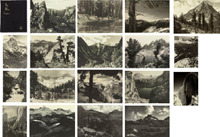
When Adams got married it marked the end of his pursuit of a music career and the official beginning to his commitment to photography and at this point his darkroom was still situated in his parents basement where there was little space and barely any suitable equipment
In the 1930s he began photographing new locations, at the same time he befriended lots of notable artists such as Georgia O’Keeffe, John Marin and Paul Strand. Strand was a major influence on Adams and motivated him to advance his work to an even more intense level
Adams got his first solo museum show at the Smithsonian institution in 1931. The following year he became part of a group show at the de young museum in san Francisco, the show included works by Imogen Cunningham and Edward Weston. The three photographers decided to create Group f/64
Group f/64 was extremely significant to the advancement of photography, it brought attention to a new southern California school of photographers, and it promoted ‘pure ’and ‘straight photography
the pictorialist view was borrowing techniques from painting and other art forms, however Group f/64 encouraged photography to be pure and not borrow from other mediums
Adams opened his own art gallery in San Francisco when he was 31. He started publishing essays and instructional books. He also published a book which resulted in the designation of the Sequoia and Kings Canyon National park in 1940.
When Adams went to new mexico in 1941 he captured one of his most famous photographs, ‘Moonrise Over Hernendez’
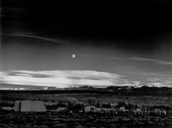
According to Adams himself he was prepared when he came across the scene, he used the luminescence of the moon to manually determine the exposure, the photograph was exhibited at the museum of modern art in 1944, over the next 40 years he made over 1300 unique prints which came to a total of $25 million in sales
Adams’ career lasted almost 60 years as a fine art/ commercial photographer, in 1970 he was commissioned by the president at the time jimmy carter, to make the first official president photograph for the white house
Adams created the cone system which was a technique that transferred light into formal measured densities for negatives and printing processes, this approach to black and white darkroom photography is even still used today
Ansel Adams died in 1983 at the age of 82 leaving behind an enormous legacy that is still heard of in today’s world.
0 notes
Photo





I took these photos to show how the light comes through the clouds at sunset and sunrise.
I really enjoyed taking these photos because I think they really show off how beautiful the sky can look at different times I love the way the light comes through the clouds and how it can create different colours in the sky
my favourite photo is the last photo because I love the colour but also how the photo has turned out, I like the fact that you cant see any of the ground but the path and you can see the small silhouette across the middle of the picture which reflects against the pink
11 notes
·
View notes
Photo



during class we were told to modify our pictures of hands,
the first photo is the original which I then modified to make the next two photos
to produce the second photo I played around with the liquify filter- I quite like the way the photo has turned out as I think it looks very abstract and I think the fact that it looks unnatural adds to that effect
to produce the second photo used the sponge effect to colour around the hand which gave me several different colour effects, I also made the hand grey as I thought it would help the hand itself stand out more and I then duplicated it twice to give the effect that it was moving- although I don't think it has worked very well and so I think if I were to do it again I would try and make it look more natural because I think that would really make the photo better
0 notes
Photo

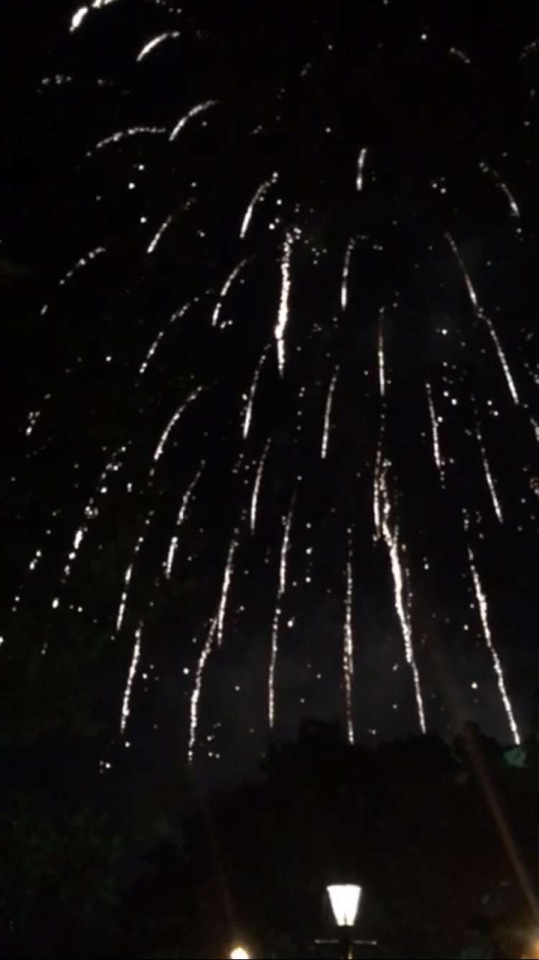

I took these three photos to represent light, I like all three photos as they all show differently the light leaving the main source,
0 notes
Photo
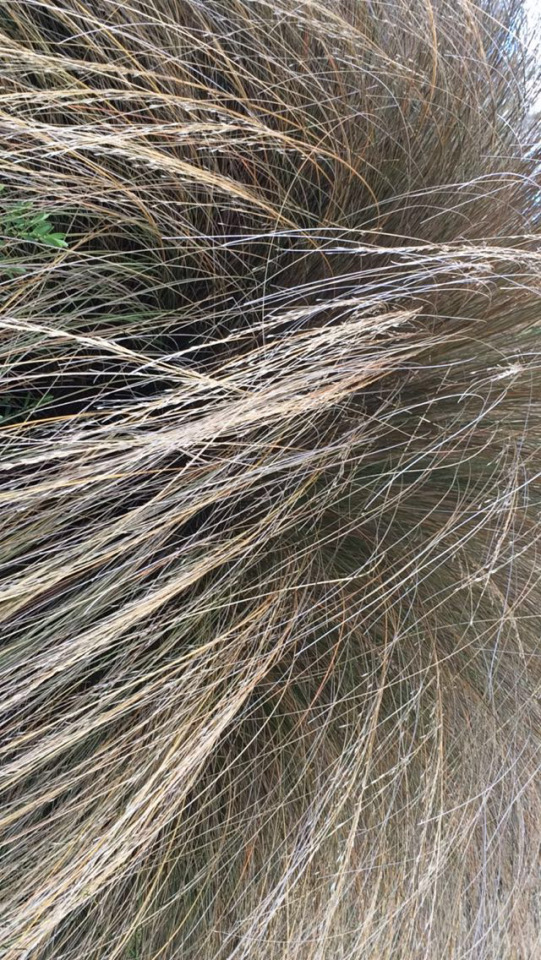
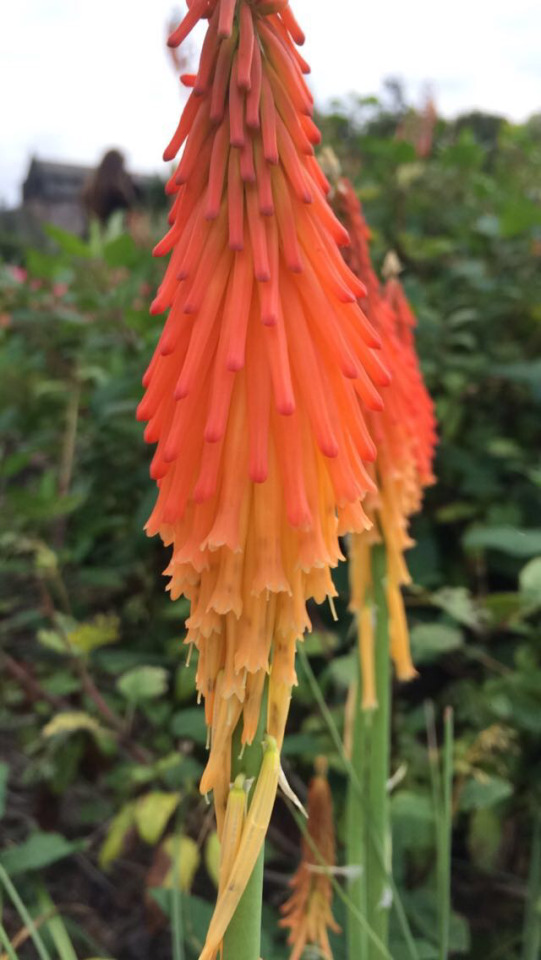
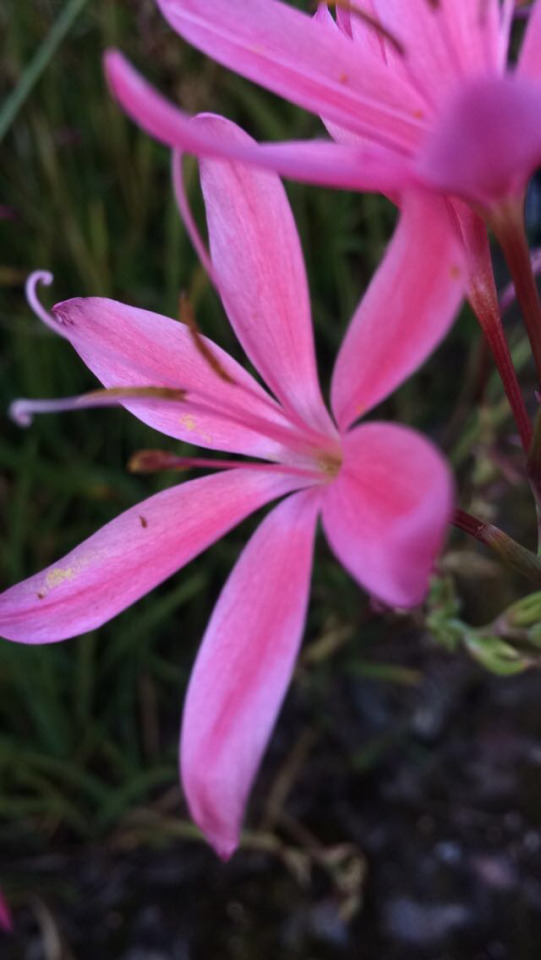
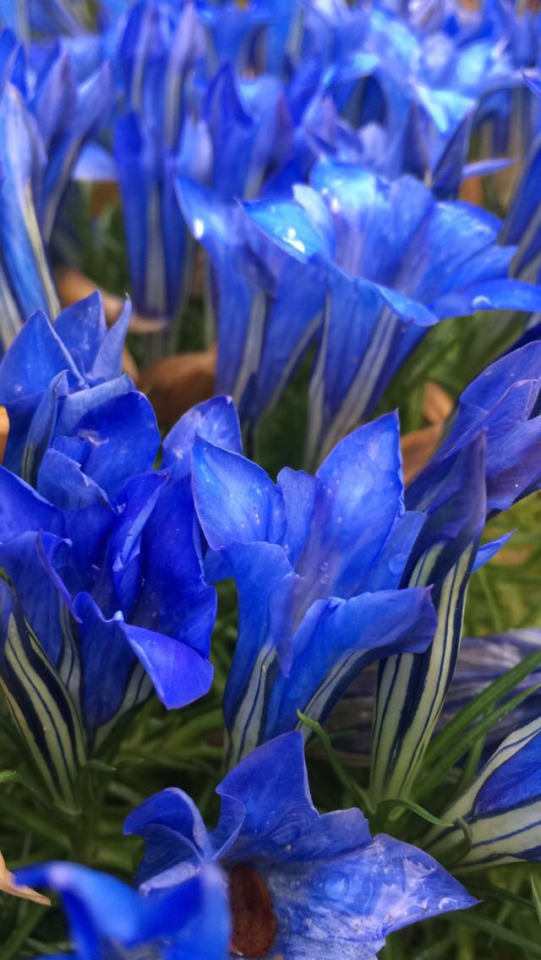

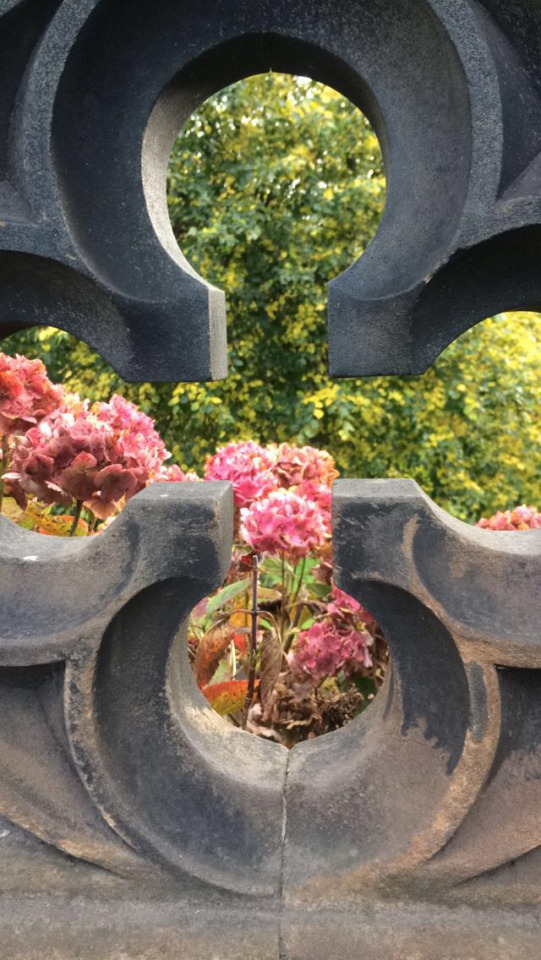
these photos were taken to show how different things can look from a close upview. they were all taken in Edinburgh, all except from the last were taken in the royal botanic gardens as I thought it would be a good place to capture some amazing close ups of plants/flowers/trees to get a more rural set of photos. I think the colours in these photos stand out I like the way in all the photos the focus is ranged, for example in the second photo the back ground is blurred so the focus is on the middle of the photo where as in the third photo most of it is blurred apart from the petals at the back
0 notes
Photo
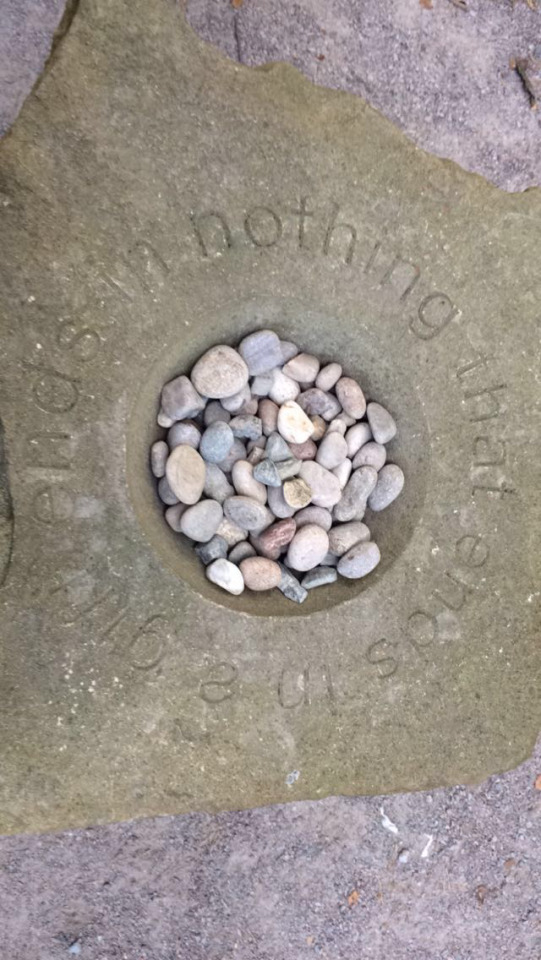
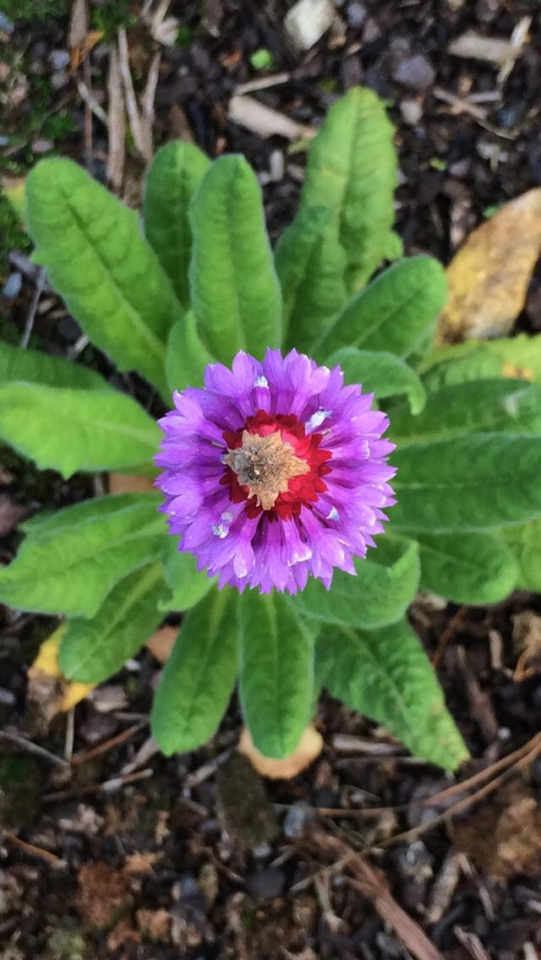
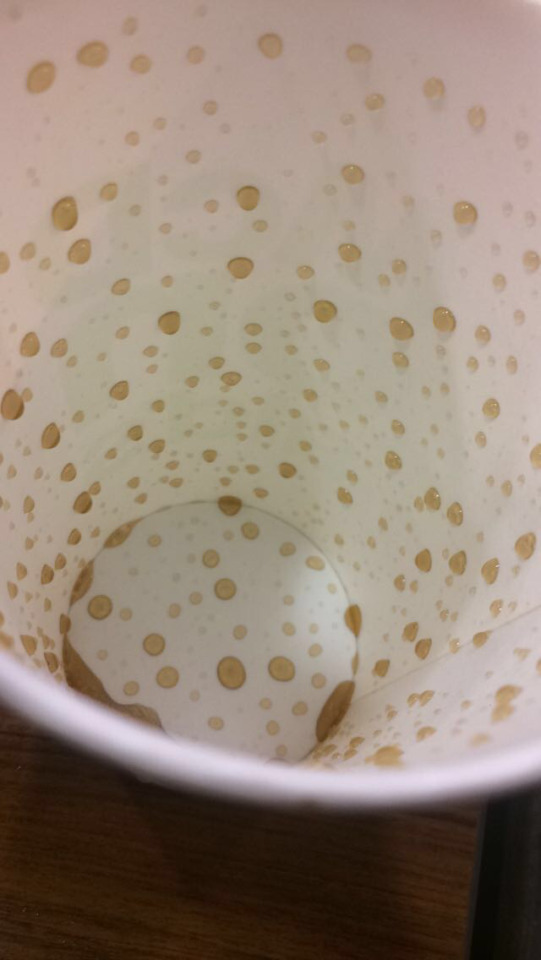
I took these photos to show how they look at a birds eye view,
The first two were taken at the royal botanic gardens, I love the way the colours stand out and contrast with eachother, in the second photo I like how the background is blurred out so all the focus is on the centre of the photo I think this is quite a nice effect
The third photo was simply taken of a cup in McDonald’s where the drink had formed a liquid pattern, I liked the way it looked in the cup and thought it gave a minimalistic effect the only thing I don’t like is the fact that you can see the rim of the cup i think it would of been better for me to have taken the photo directly above the cup so you couldn’t see the edges, this would probably have given a better effect
0 notes
